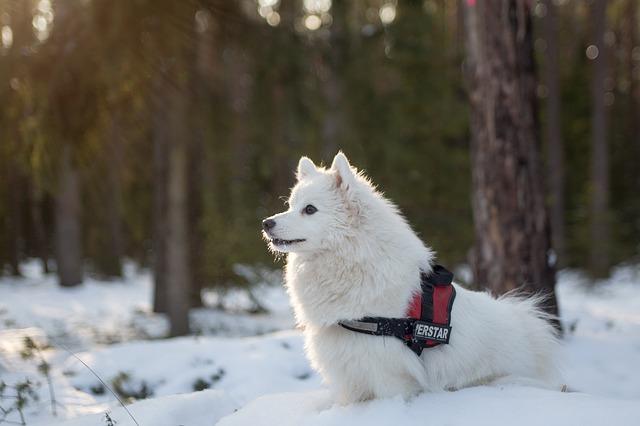With these winter pet safety tips, you can safely guide your pet through the cold winter. The best tips in a row.
With temperatures well below zero and a thick layer of snow on the ground, we take out our hats, gloves, and scarf and pack ourselves extra warm. But what special measures do you actually take for your pet? Can you just go for a walk with the dog, or does he also need a jacket? And what about cats and rabbits?
One person says that his dog can withstand the cold weather, the other put a thick coat on the animal. Those opinions for winter pet safety tips are just as different as the owners themselves. Still, we do have the advice to guide your pet through the winter as safely and comfortably as possible.
Dog
You can go outside in these temperatures to walk your dog. Most dogs have a thick coat, but if not, you can put them on a jacket. They don’t get hypothermic quickly because a dog clearly indicates when he no longer feels like being outside.
It doesn’t hurt to be more alert to that now. If a dog does shiver during a walk, it is wise to shorten the tour and go home. However, you don’t have to do anything special at home to warm it up; a dog, just like us, gets warm from exertion.
Vaseline
Because it is particularly slippery on the street, there is a lot of sprinkling. That is why it is wise to keep an eye on the soles of your dog’s feet. Salt can bite very viciously into small wounds and get infected. Tip: lubricate them with petroleum jelly before you go outside. This way, you protect the soles of the feet.
And no matter how much fun your four-legged friend likes to eat snowballs, it is wise to watch out for it. There is often dirt or salt in the snow, which is bad for the stomach. Throwing some snow now and then won’t hurt, but replacing an ordinary (play) ball with snowballs isn’t smart.
Cats and rabbits
While most dogs love the snow, cats prefer to stay warm indoors. They can withstand the cold, but most cats turn around when they feel just a little breeze from the harsh east wind. If they do go outside, it is essential that they can always go in. It is also vital that the cat flap is free of snow and that it works properly.
Cats like to roam outside look for hiding places in this wintery weather, so always check whether your neighbors’ cat is not hiding in the shed or garden house and always knocking on your hood before leaving.
Unlike cats and dogs, rabbits usually live in the garden. You should, therefore, not bring a rabbit that has been outside all winter. The temperature transition from the outside to the inside is too great for a rabbit.
The winter coat is extra thick and can withstand the cold very well. However, it doesn’t hurt to offer the animal shelter when the wind is blowing hard. Think of extra hay in the loft, a cloth over the openings, and if necessary, a night in an unheated shed. And very important: make sure that your rodent always has enough fresh drinking water.
A peanut garland for the birds
For garden birds, a peanut garland and/or a jar of peanut butter comes in handy. That is all the more welcome now that the food sources of birds have been snowed under. And now it is also difficult for birds to get fresh drinking water, so there is no harm in putting water outside that is not frozen.
Do not worry if you see horses and sheep in the snowy meadow during a walk. These animals develop a winter coat that makes them resistant to the cold.
